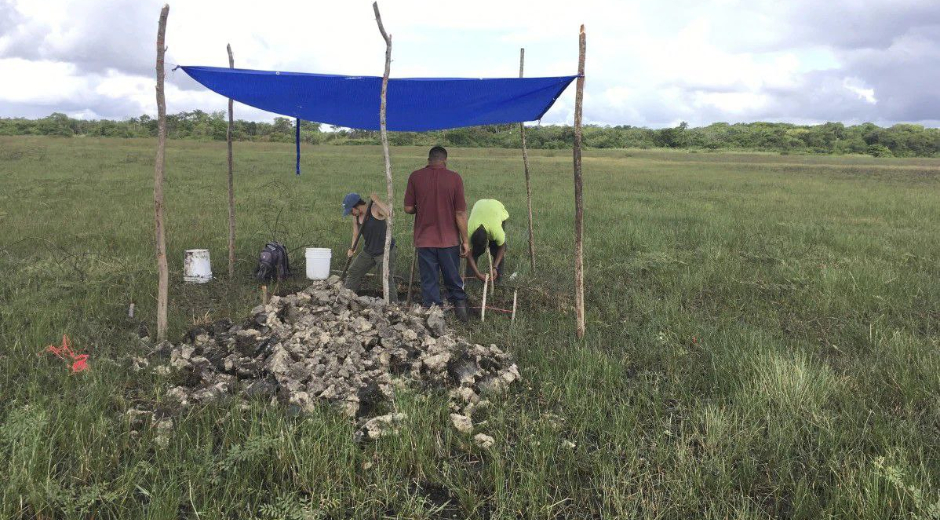
Yucatan, Nov 23. - Long before the ancient Maya built temples, their predecessors were already modifying the landscape of the Yucatan Peninsula in Central America.
Using drones and Google Earth images, archaeologists have discovered a 4,000-year-old network of earthen canals in what is now Belize.
The findings were published Friday in the journal Science Advances.
“Aerial images were crucial in identifying this truly distinctive pattern of zigzag linear canals” that extend for several miles across wetlands, said study co-author Eleanor Harrison-Buck from the University of New Hampshire.
The team then conducted excavations at the Crooked Tree Wildlife Sanctuary in Belize.
The ancient fish canals, along with retention ponds, were used to channel and capture freshwater species such as catfish.
“The barbed arrowheads” found nearby could have been tied to sticks and used for fishing, said study co-author Marieka Brouwer Burg of the University of Vermont.
The canal networks were built about 4,000 years ago by semi-nomadic peoples on the Yucatan coastal plain.
According to the study, the canals were used for about 1,000 years or more, including during the “formative” period when the Maya began settling into permanent farming villages and a distinctive culture began to emerge.
“It’s really interesting to see such large-scale modifications of the landscape at such an early time; it shows that people were already building things,” said archaeologist Claire Ebert of the University of Pittsburgh, who was not involved in the study.
At the height of Maya civilization, people in this region built temples, roads, pyramids and other monuments. They also developed complex systems of writing, mathematics and astronomy.
Scientists know much more about this era because there are many more significant archaeological sites, Ebert said. But this new study reveals a link between earlier peoples who inhabited that region and the later emergence of Mayan culture.
These ancient fish-catching canals could have played a role in helping later Mayan pyramids rise above the Yucatan rainforest.
“This shows continuity,” said archaeologist Jeremy Sabloff of the University of Pennsylvania, who was not part of the research.
On a practical level, the fish-catching canals helped the region’s early inhabitants diversify their diets and feed a growing population, establishing a foundation for later reaching high cultural heights. (Text and Photo: Cubadebate)